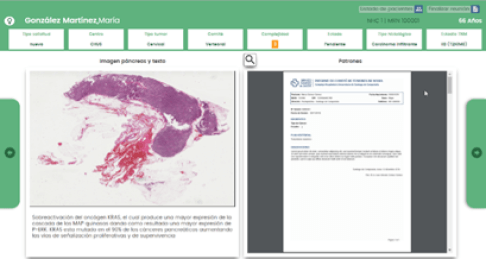5GTANGO project concluded successfully
Quobis role in the 5GTango project
5GTANGO is a 5GPPP Phase2 project that enables the flexible programmability of 5G networks.
Quobis has been involved in the 5GTANGO project, that has just finished, where one of its main roles was the implementation of a Communication suitepilot to test how the 5GTANGO platform helps to deal with security, monitoring and debugging issues when scaling.
The challenge: to deploy RT communications platform over an NFV architecture
The goal of this pilot was to deploy a commercial operator real-time unified communication platform over an NFV (Network Functions Virtualization) architecture. During the deployment of a real-time unified communication system, it is necessary to deal with some difficulties related to security, monitoring, debugging, scaling, etc.
This pilot shows how Software Networks technologies, and the integrated SONATA NFV platform, in particular, can help to deal with such technical issues.
Helping telcos to scale confidently while reducing costs
Dealing with costly manual task of personalized configurations during deployments
The implementation of a real-time unified communication platform for a specific telco scenario demands a personalized configuration with a complex process for testing, monitoring and debugging the final installation. Furthermore, additional manual configuration and testing processes are required any time that scaling the system to take care of new requirements is needed. This is a time-consuming process that involves constant work over the changing conditions of the scenario, which diminishes the flexibility and efficiency of the systems and its resources.
Verification tools and Quality Assurance testing
On the other side, once the deployment is ready, it is necessary to verify that the service works properly and this typically requires external verification tools and even Quality Assurance testing for customizing some functionality.
Operating and monitoring the service during the whole life-cycle is also a relevant cost. The ability to scale-in and out the service is also complicated to implement when deploying the services in traditional platforms.
Automating processes without renounce to the flexibility to adapt to any special requirements:
But the deployment, operation, and maintenance of this kind of service is not just a time-consuming task, but it also requires well-trained staff. Automating all these processes while keeping the ability to adapt to any special requirements in terms of load and QoE is critical to reduce the go-to-market costs and meet customer expectations.
Software Network technologies and the SONATA NFV platform allow delivering improved real-time communication capabilities in the new scenarios demanded by the market as a result of the explosion of the 5G technology.
Benefits of NFV technology in real-time services
The pilot led by Quobis tested four different scenarios that showcase some of the benefits of NFV technology in real-time services:
- Best-effort video-conference services: Provides best-effort real-time communication capabilities to the users to enable functionalities like video-conference, Instant Messaging (IM) and other real-time collaboration tools.
- Premium video-conference services: Video-conference services are quite sensitive to some network parameters. This scenario deployed two video-conference network services with different network requirements in terms of quality of service, one requesting high QoS requirements for premium users and a second one requiring best-effort QoS for normal users.
- Edge video-conference services: In some cases, it may be required to deploy video-conference services closer to the users in order to reduce the delay, since it may exceed the maximum threshold and the system may not work properly. In this use scenario, the service is improved by placing the delay-sensitive components at the edge of the network.
- Video-conference scaling out/in services: This use case considers the need to increment the number of instances of some of the VNFs.
Quobis’ products have been adapted to be deployed in an NFV platform
Thanks to this project, Quobis’ products have been adapted to be deployed in an NFV platform helping enormously to break one of the barriers to entry in the new 5G market.
- Quobis can easily adapt its real-time communications suit to a standard-based NFV architecture and extend its benefits and features, such as automatic deployment and straight forward setup of scale-in and out rules, to the commercial portfolio.
- Possibility of easily delivering QoE-aware services in the short term. The use of the SONATA Service Platform slicing feature provides a lot of flexibility when deploying different QoS over the same physical network. Using the SONATA platform, the user will have the option to select which QoS needs by selecting an SLA for each Network Service within the Slice.
- In real-time communication system implementations, it is needed to deal with some difficulties related to media traffic management which is very sensitive to network conditions and the developments added by SONATA enable the interaction with ONF Transport API depending on the QoS requirements.
Are you looking for a partner for a 5G project? Please, let us help you








